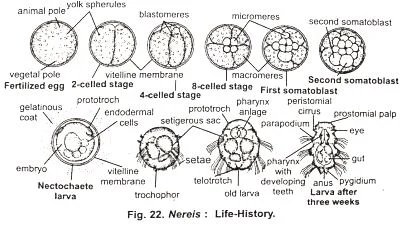
Now, the Nereis virens isn’t just an ordinary worm. It plays a crucial role in marine ecosystems, helping to aerate the sediment and serving as food for various fish and birds. But what does its life cycle look like? Let’s dive into the different stages and behaviors of this intriguing creature, much like turning the pages of a book full of surprises.
Introducing the Nereis Virens
First things first—what exactly is a Nereis virens? These marine worms are elongated and can grow up to 10 inches long! They have a segmented body and often exhibit a range of colors from olive green to reddish-brown. Their distinctive parapodia, or fleshy side flaps, assist in swimming and burrowing. You might spot them in shallow waters along coastlines, often hidden beneath the sand or mud.
Nereis virens are quite the interesting characters in the ocean. They have a unique set of tools for survival, including a jaw that looks almost like a set of pincers, allowing them to grasp and feed on small organisms. You might be wondering how this little worm impacts its environment. Well, it helps break down organic materials, making nutrients available for other marine life. Talk about teamwork!
Stage 1: Egg Development
The life cycle of the Nereis virens begins with the egg stage. After the adult worms engage in a spectacular mating display, they release eggs and sperm into the water. This usually occurs in the spring or early summer when conditions are just right.
Once fertilized, the eggs float around, developing in the water column. This process can take anywhere from a few days to a week, depending on environmental conditions. As they mature, tiny larvae called trochophores emerge. These larvae are like little explorers, drifting through the ocean currents, ready to face their next adventure.
During this stage, survival is all about drifting and dodging predators. The trochophores are a nutritious snack for tiny marine creatures, so many don’t make it. Yet, those that do are on their way to becoming the next generation of sandworms!
Stage 2: Larval Stage
After a brief period as trochophores, the larvae transform into metatrochophore larvae. This stage is crucial for their development. You might think of this stage as a teenage phase—lots of growing and changing happens here! The metatrochophores start to develop more defined features, like their segmented bodies and parapodia.
As they continue to grow, these larvae begin to sink to the ocean floor. They prefer to settle in soft, sandy, or muddy substrates where they can burrow and protect themselves from predators. Here’s the fun part: they have a strong instinct to dig down into the sediment and start turning into juvenile sandworms. It’s like moving into their first apartment!
Stage 3: Juvenile Stage
Once the larvae settle into their new habitat, they enter the juvenile stage. This is where they really start to take on the characteristics of adult Nereis virens. They develop a more robust body and start exhibiting those famous parapodia. This stage can last several months, and during this time, they’re busy feeding on organic matter and small microorganisms found in the sediment.
Juvenile Nereis virens are quite adaptable and can thrive in varied environmental conditions. They usually feed at night, making them nocturnal creatures. You might say they’ve got a bit of a nightlife! They’ll also begin to grow and molt as they increase in size, shedding their old skin to make way for a larger body.
Stage 4: Adult Stage
After several months of growth, Nereis virens reaches the adult stage. Now fully formed, they boast long, segmented bodies with gills and are ready to take on the world. Adult worms often venture out in search of food, which includes detritus and small organisms found on the ocean floor.
During this stage, they also engage in some fascinating behaviors. For instance, when threatened, they can expel a dark mucus-like substance to confuse predators. Now that’s a cool survival tactic! They even have a unique way of reproducing, known as epitoky, where the worm transforms into a reproductive form and swims to the surface to mate before dying. It’s a dramatic ending to a remarkable life.
The Role of Nereis Virens in the Ecosystem
Nereis virens isn’t just a fascinating creature; it plays a vital role in its ecosystem. These worms help aerate the sediment, allowing for better water flow and nutrient distribution. By burrowing, they mix organic materials into the soil, which benefits other marine life. It’s like they’re helping to maintain a healthy underwater community.
Moreover, they serve as an important food source for many species, including fish, birds, and even other marine mammals. Think of them as tiny building blocks of the marine food web. Without sandworms, the balance of life in coastal ecosystems could be disrupted. So, the next time you’re at the beach, remember that these little guys are an essential part of the underwater world.
The life cycle of the Nereis virens is a remarkable journey from egg to juvenile to adult. Each stage reveals different behaviors and adaptations that allow this worm to thrive in its ocean habitat. From their early days as drifting larvae to their crucial role in the ecosystem, these sandworms are more than just simple creatures; they’re complex beings woven into the fabric of marine life.
So, whether you’re a marine enthusiast or just curious about the wonders of the ocean, take a moment to appreciate the Nereis virens. These unassuming worms are not only interesting in their own right but also play a significant part in keeping our oceans healthy. Next time you see sand swirling in the water, think of the vibrant life cycle happening beneath the surface!
